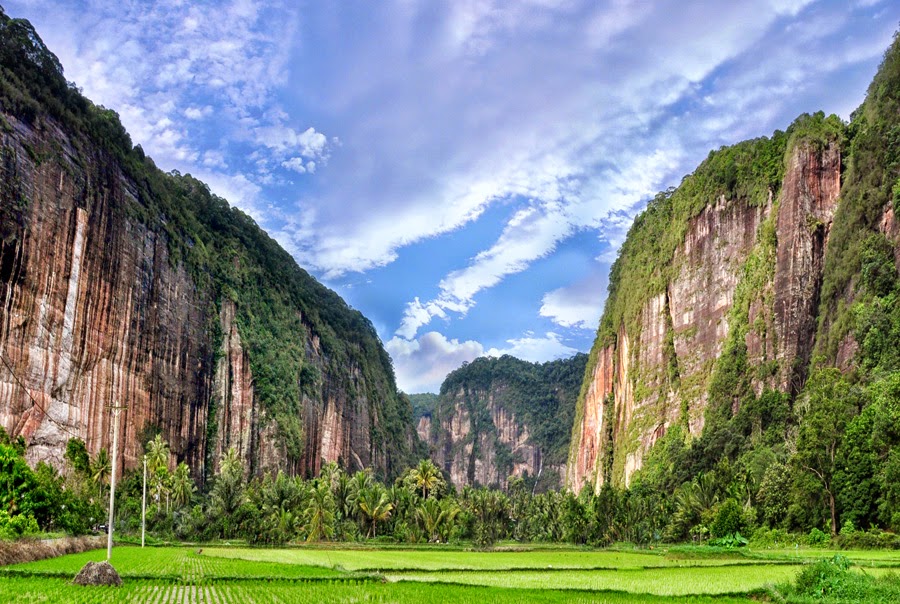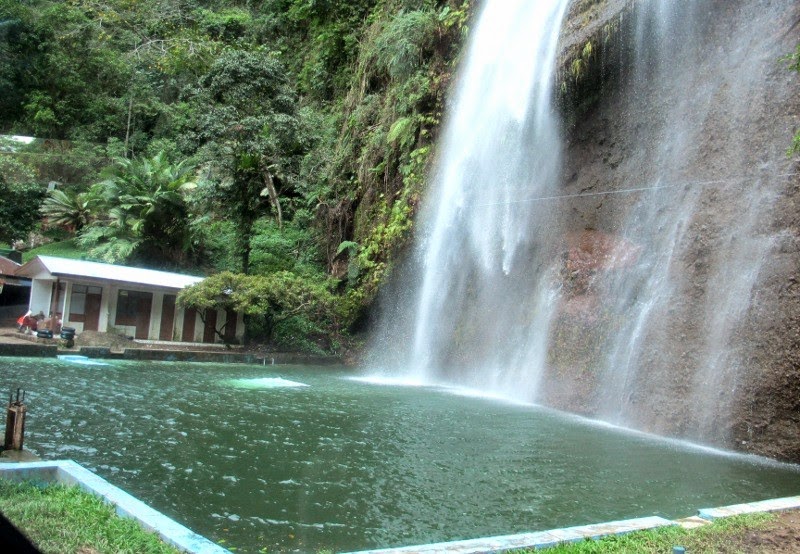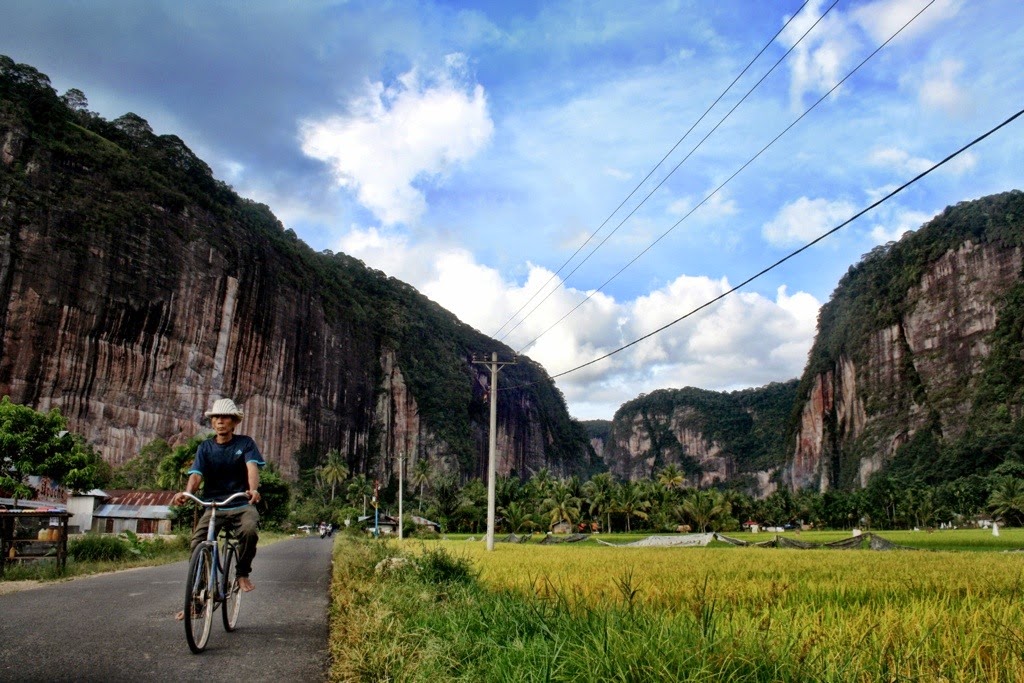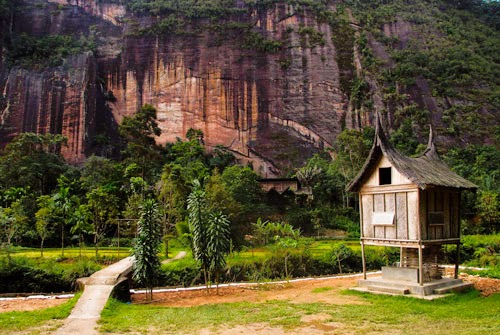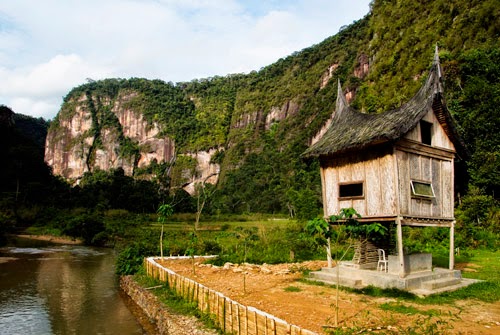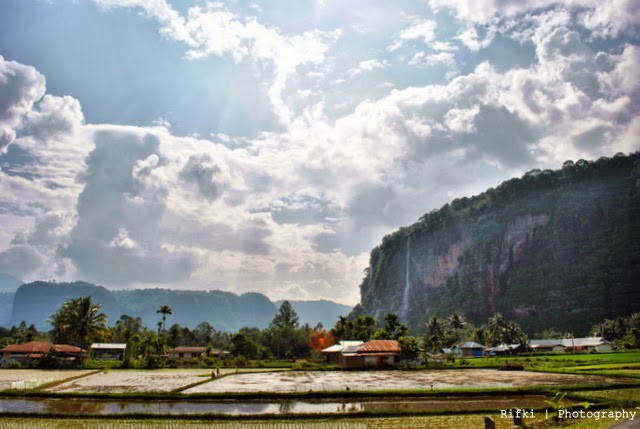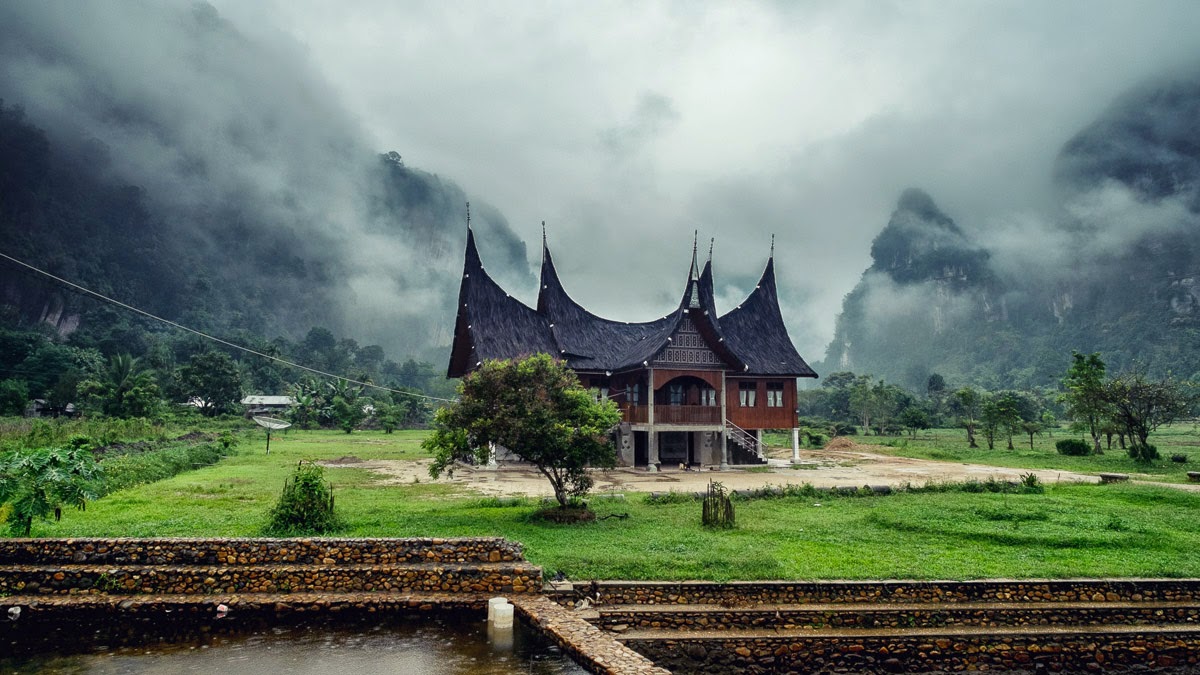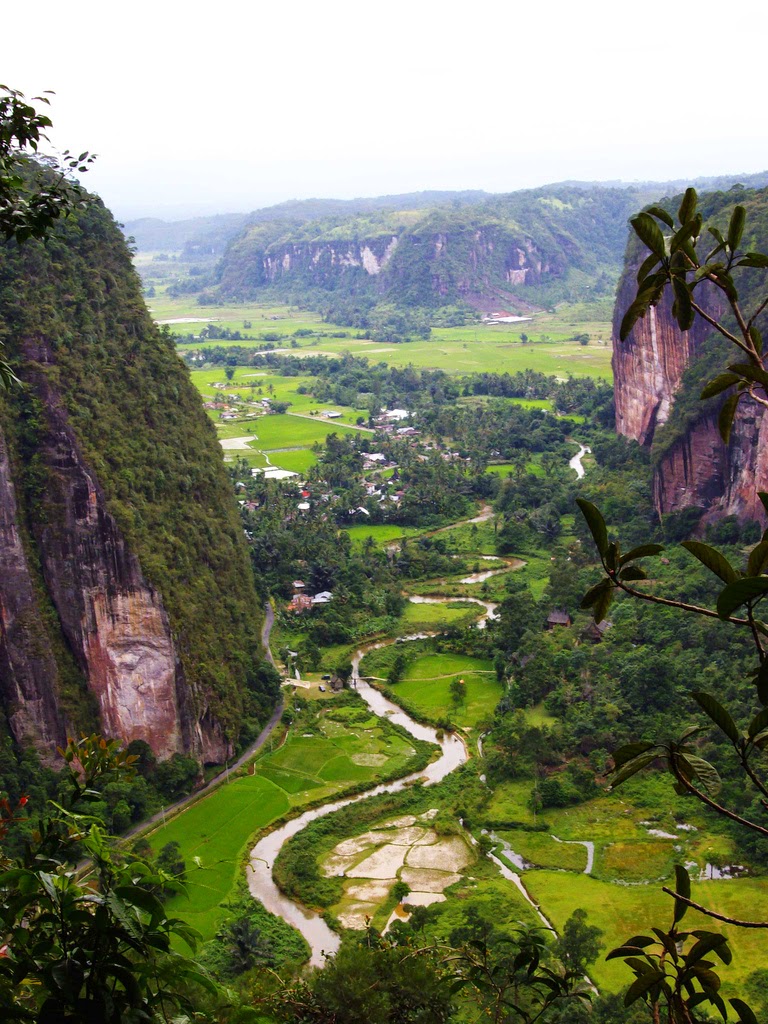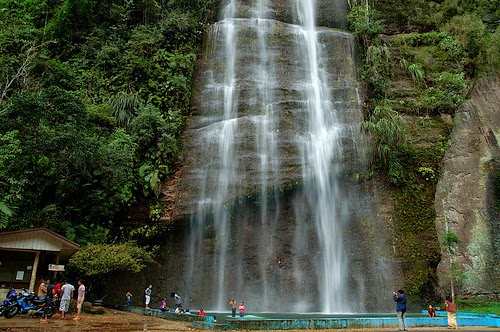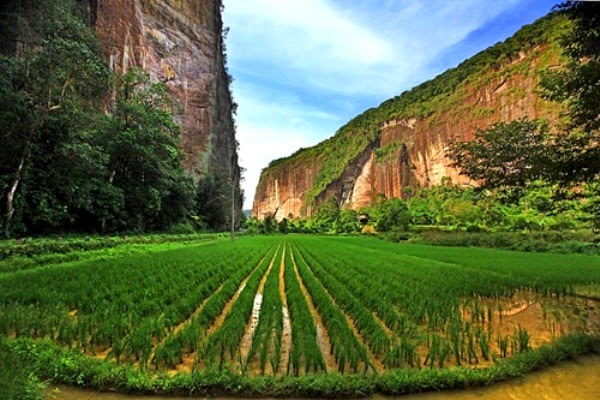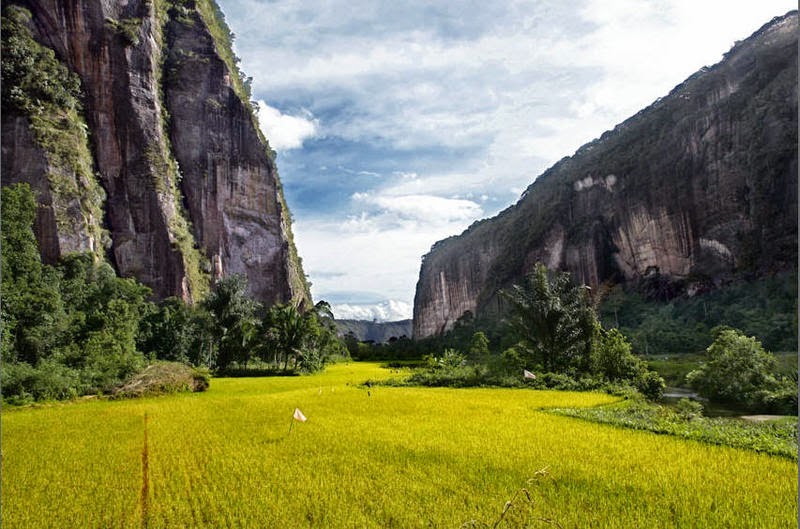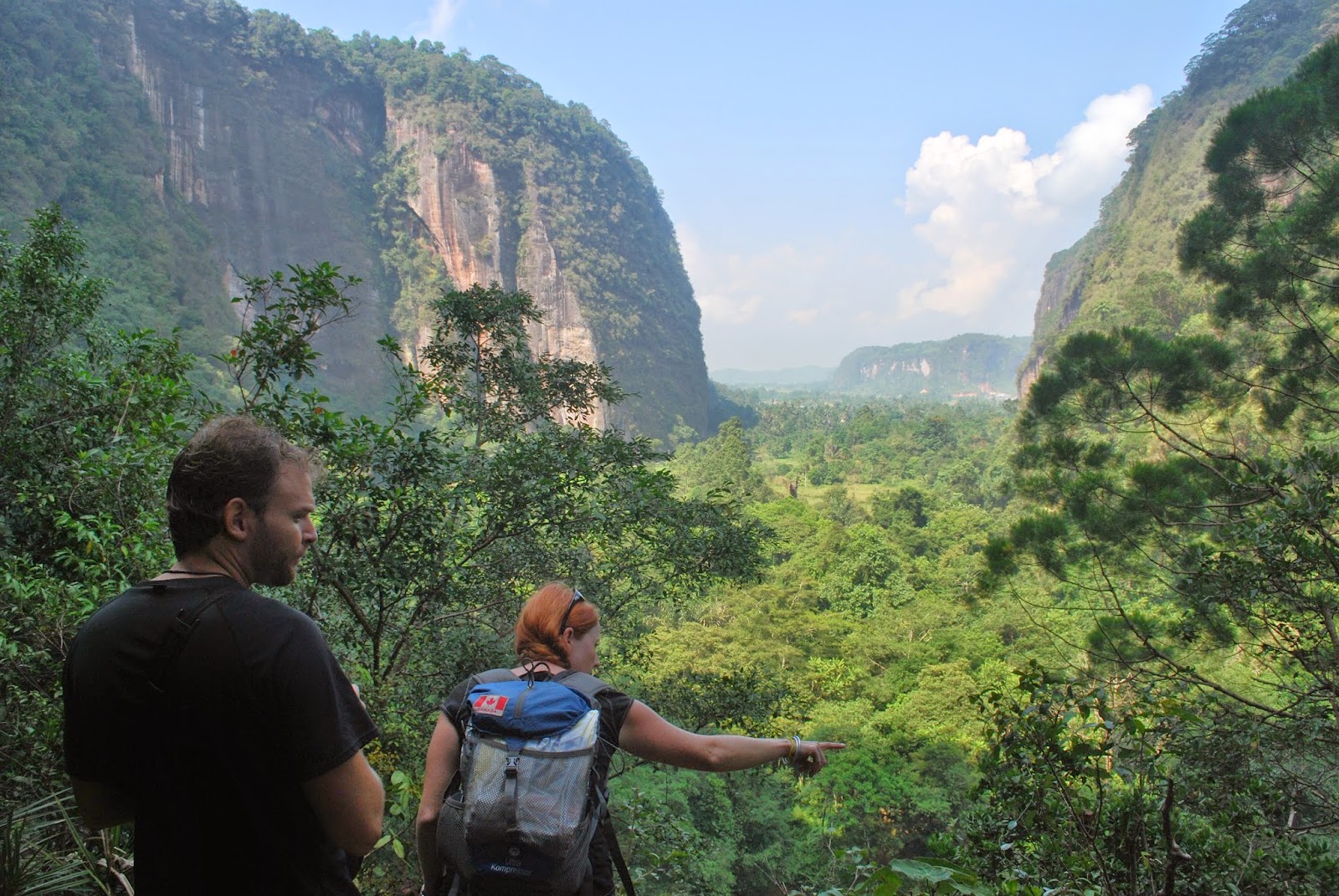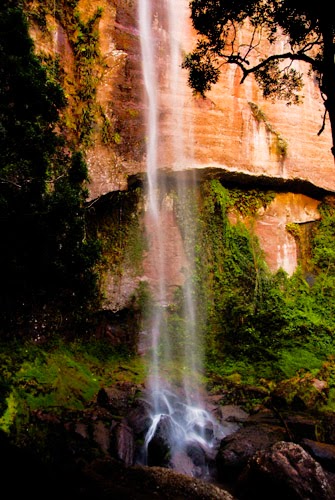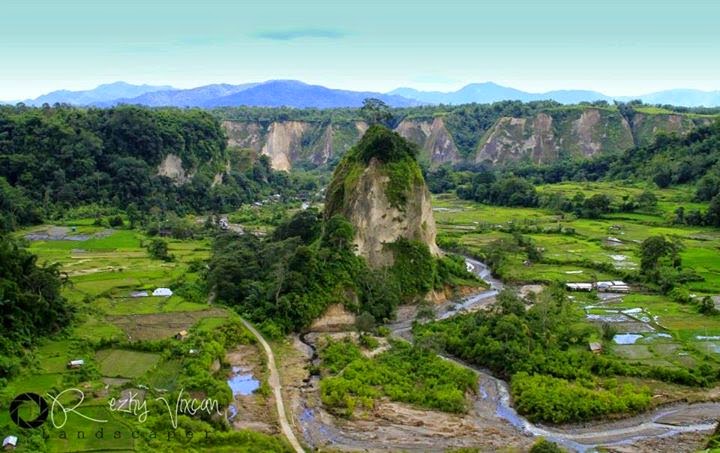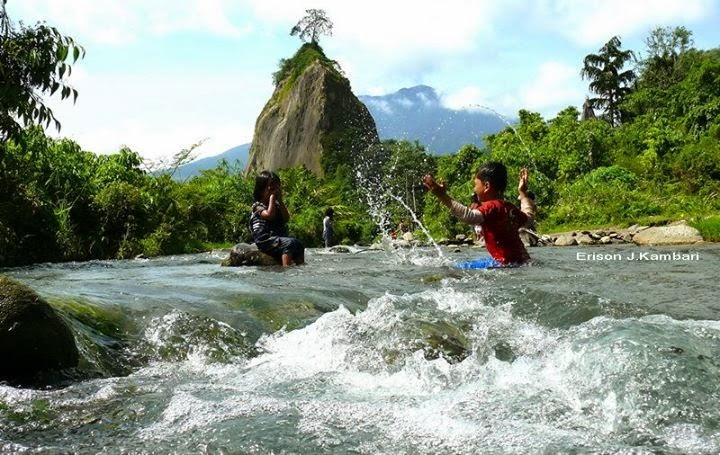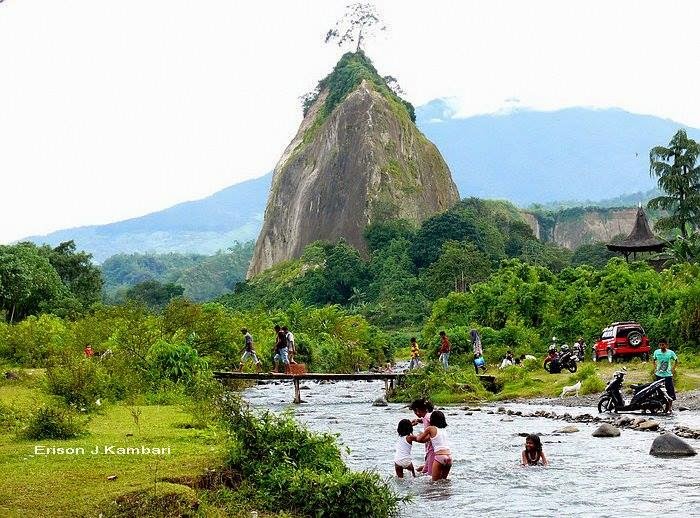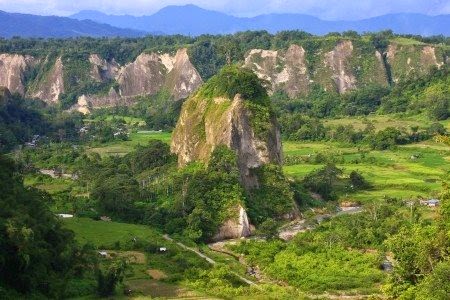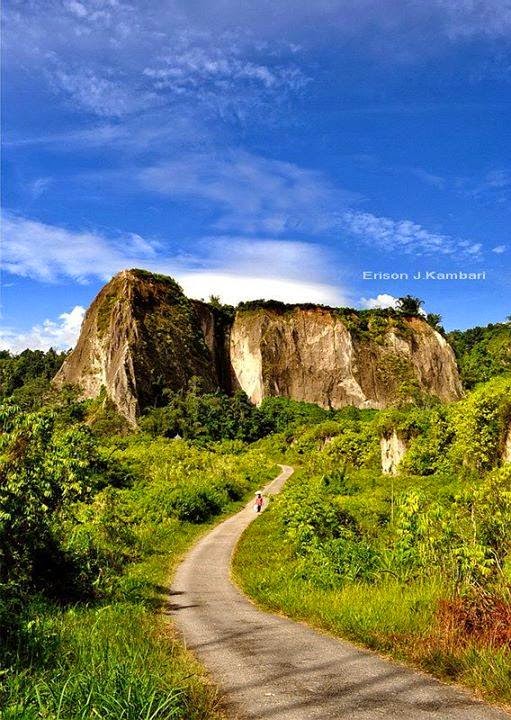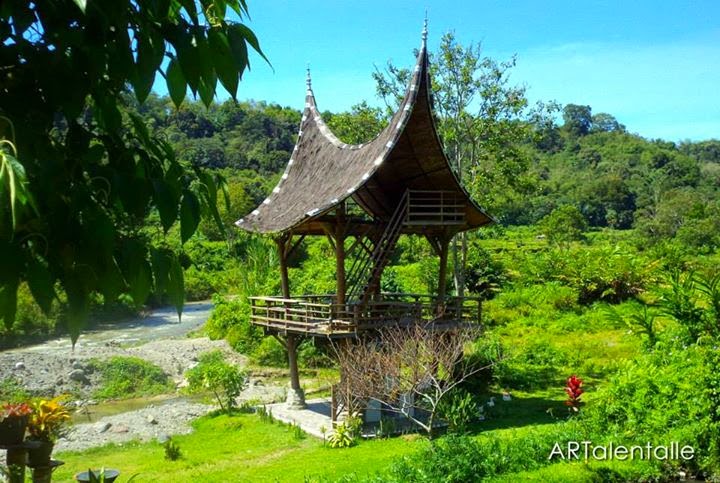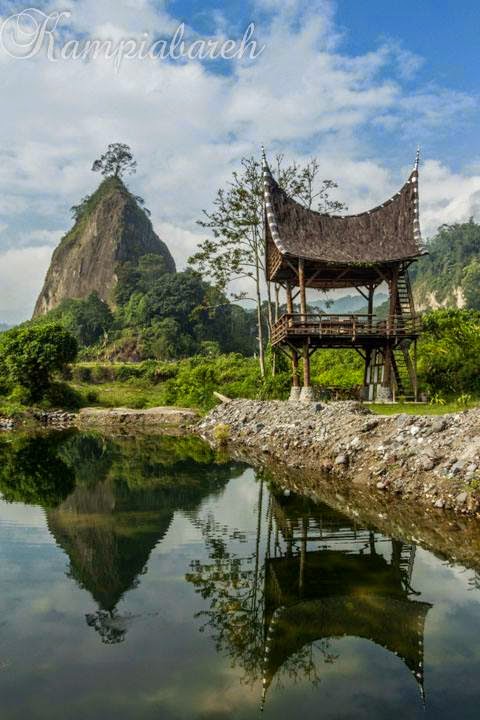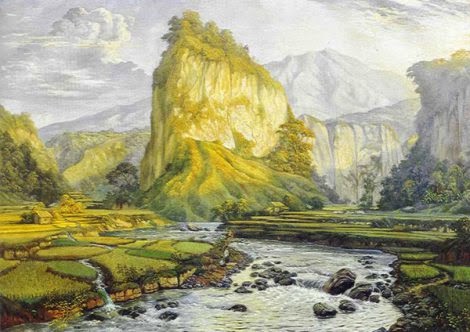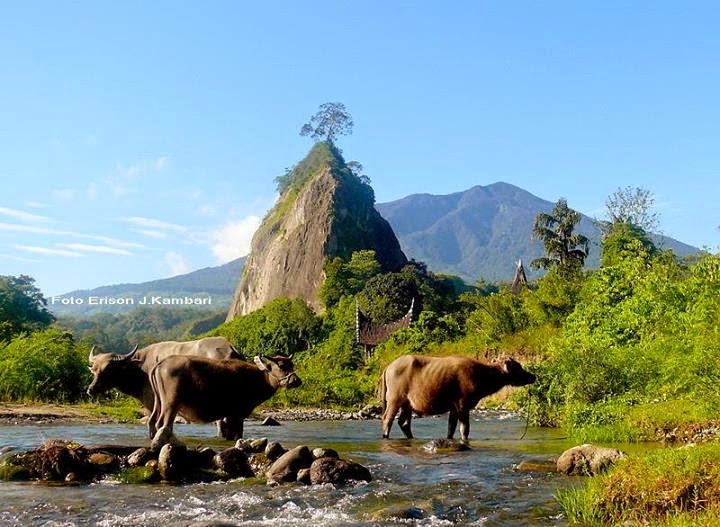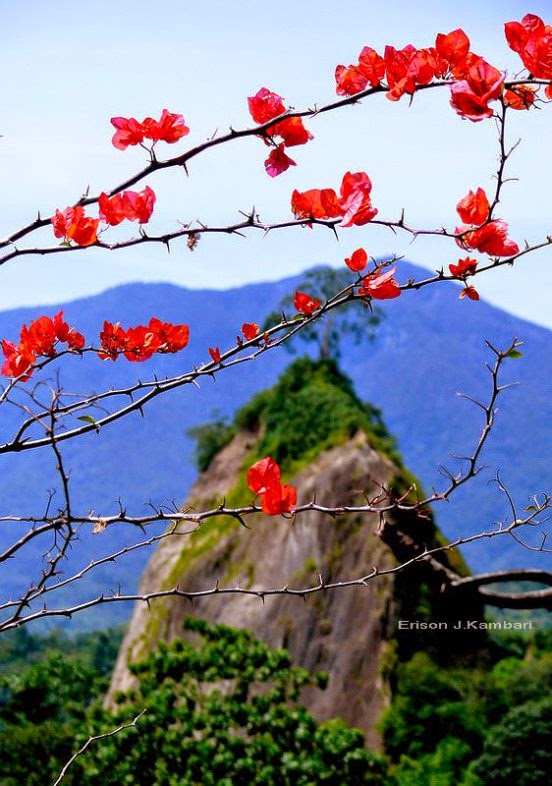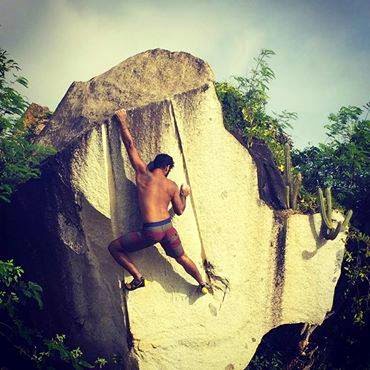The Minangkabau are famous for their dedication to education, as well the widespread diaspora of their men throughout southeast Asia, the result being that Minangs have been disproportionately successful in gaining positions of economic and political power throughout the region. The co-founder of the Republic of Indonesia, Mohammad Hatta, was a Minang, as were the first modern heads of state of both Malaysia and Singapore
The Minangkabau are strongly Islamic, but also follow their ethnic traditions, or adat. The Minangkabau adat was derived from animist and Hindu-Buddhist beliefs before the arrival of Islam, and remnants of animist beliefs still exist even among some practicing Muslims. The present relationship between Islam and adat is described in the saying "tradition [adat] founded upon Islamic law, Islamic law founded upon the Qur'an" (adat basandi syara', syara' basandi Kitabullah).
As the world's most populous (and politically and economically influential) matrilineal ethnicity, Minangkabau gender dynamics have been extensively studied by anthropologists. The adat traditions have allowed Minangkabau women to hold a relatively advantageous position in their society compared to most patriarchal societies, as most property and other economic assets pass though female lines. With the Dutch occupation of their territories, these traditions have been eroded due to western influences and conservative Islamic thought.
Their West Sumatran homelands were the location of the Padri War from 1821 to 1837.
Contents
Etymology
Main article: Minangkabau (legend)
The name Minangkabau is thought to be a conjunction of two words, minang ("victorious") and kabau
("buffalo"). There is a legend that the name is derived from a
territorial dispute between the Minangkabau and a neighbouring prince.
To avoid a battle, the local people proposed a fight to the death
between two water buffalo to settle the dispute. The prince agreed and
produced the largest, meanest, most aggressive buffalo. The Minangkabau
produced a hungry baby buffalo with its small horns ground to be as
sharp as knives. Seeing the adult buffalo across the field, the baby ran
forward, hoping for milk. The big buffalo saw no threat in the baby
buffalo and paid no attention to it, looking around for a worthy
opponent. But when the baby thrust his head under the big bull's belly,
looking for an udder, the sharpened horns punctured and killed the bull,
and the Minangkabau won the contest and the dispute.The roofline of traditional houses in West Sumatra, called Rumah Gadang (Minangkabau, "big house"), curve upward from the middle and end in points, in imitation of the water buffalo's upward-curving horns.
The first mention of the name Minangkabau as Minangkabwa, is in the 1365 Majapahit court poem, the Desawarnana (or Nagarakrtagama) composed by Mpu Prapanca.[4]
History
A statue believed to be Adityawarman, founder of a Minangkabau kingdom.
Adityawarman, a follower of Tantric Buddhism with ties to the Singhasari and Majapahit kingdoms of Java, is believed to have founded a kingdom in the Minangkabau highlands at Pagaruyung and ruled between 1347 and 1375. The establishment of a royal system seems to have involved conflict and violence, eventually leading to a division of villages into one of two systems of tradition, Bodi Caniago and Koto Piliang, the later having overt allegiances to royalty.[6] By the 16th century, the time of the next report after the reign of Adityawarman, royal power had been split into three recognized reigning kings. They were the King of the World (Raja Alam), the King of Adat (Raja Adat), and the King of Religion (Raja Ibadat), and collectively they were known as the Kings of the Three Seats (Rajo Tigo Selo).[7] The Minangkabau kings were charismatic or magical figures, but did not have much authority over the conduct of village affairs.[6][8]
Tuanku Imam Bonjol, a leader in the Padri War.
Late in the 18th century the gold supply which provided the economic base for Minangkabau royalty began to be exhausted. Around the same time other parts of the Minangkabau economy had a period of unparalleled expansion as new opportunities for the export of agricultural commodities arose, particularly with coffee which was in very high demand. A civil war started in 1803 with the Padri fundamentalist Islamic group in conflict with the traditional syncretic groups, elite families and Pagaruyung royals. As a result of a treaty with a number of penghulu and representatives of the Minangkabau royal family, Dutch forces made their first attack on a Padri village in April 1821.[6] The first phase of the war ended in 1825 when the Dutch signed an agreement with the Padri leader Tuanku Imam Bonjol to halt hostilities, allowing them to redeploy their forces to fight the Java War. When fighting resumed in 1832, the reinforced Dutch troops were able to more effectively attack the Padri. The main center of resistance was captured in 1837, Tuanku Imam Bonjol was captured and exiled soon after, and by the end of the next year the war was effectively over.
With the Minangkabau territories now under the control of the Dutch, transportation systems were improved and economic exploitation was intensified. New forms of education were introduced, allowing some Minangkabau to take advantage of a modern education system. The 20th century marked a rise and cultural and political nationalism, culminating in the demand for Indonesian independence. Later rebellions against the Dutch occupation occurred such as the 1908 Anti-Tax Rebellion and the 1927 Communist Uprising. During World War II the Minangkabau territories were occupied by the Japanese, and when the Japanese surrendered in August 1945 Indonesia proclaimed independence. The Dutch attempts to regain control of the area were ultimately unsuccessful and in 1949 the Minangkabau territories became part of Indonesia as the province of Central Sumatra.
In February 1958, dissatisfaction with the centralist and communist-leaning policies of the Sukarno administration triggered a revolt which was centered in the Minangkabau region of Sumatra, with rebels proclaiming the Revolutionary Government of the Republic of Indonesia (PRRI) in Bukittinggi. The Indonesian military invaded West Sumatra in April 1958 and had recaptured major towns within the next month. A period of guerrilla warfare ensued, but most rebels had surrendered by August 1961. In the years following, West Sumatra was like an occupied territory with Javanese officials occupying most senior civilian, military and police positions.[9] The policies of centralization continued under the Suharto regime. The national government legislated to apply the Javanese desa village system throughout Indonesia, and in 1983 the traditional Minangkabau nagari village units were split into smaller jorong units, thereby destroying the traditional village social and cultural institutions.[10] In the years following the downfall of the Suharto regime decentralization policies were implemented, giving more autonomy to provinces, thereby allowing West Sumatra to reinstitute the nagari system.[11]
Historiography
The village of Pariangan, located on the slopes of Mount Marapi, is in folklore said to be the first Minangkabau village.
A division in Minangkabau adat into two systems is said to be the result of conflict between two half-brothers Datuk Ketemanggungan and Datuk Perpatih nan Sabatang, who were the leaders who formulated the foundations of Minangkabau adat. The former accepted Adityawarman, a prince from Majapahit, as a king while the latter considered him a minister, and a civil war ensued. The Bodi Caniago system formulated by Datuk Perpatih nan Sabatang is based upon egalitarian principles with all panghulu (clan chiefs) being equal while the Koto Piliang system is more autocratic with there being a hierarchy of panghulu. Each village (nagari) in the darek was an autonomous "republic", and governed independently of the Minangkabau kings using one of the two adat systems. After the darek was settled, new outside settlements were created and ruled using the Koto Piliang system by rajas who were representatives of the king.[12]
Culture
Minangkabau have large corporate descent groups, but they traditionally reckon descent matrilineally.[13] A young boy, for instance, has his primary responsibility to his mother's and sisters' clans.[13] It is considered "customary" and ideal for married sisters to remain in their parental home, with their husbands having a sort of visiting status. Not everyone lives up to this ideal, however.[13] In the 1990s, anthropologist Evelyn Blackwood studied a relatively conservative village[citation needed] in Sumatera Barat where only about 22 percent of the households were "matrihouses", consisting of a mother and a married daughter or daughters.[13] Nonetheless, there is a shared ideal among Minangkabau in which sisters and unmarried lineage members try to live close to one another or even in the same house.[13]Landholding is one of the crucial functions of the suku (female lineage unit). Because Minangkabau men, like Acehnese men, often migrate to seek experience, wealth, and commercial success, the women's kin group is responsible for maintaining the continuity of the family and the distribution and cultivation of the land.[13] These family groups, however, are typically led by a penghulu (headman), elected by groups of lineage leaders.[13] With the agrarian base of the Minangkabau economy in decline, the suku—as a landholding unit—has also been declining somewhat in importance, especially in urban areas.[13] Indeed, the position of penghulu is not always filled after the death of the incumbent, particularly if lineage members are not willing to bear the expense of the ceremony required to install a new penghulu.[13]
The Minangs are the world's largest matrilineal society; properties such as land and houses are inherited through female lineage. Some scholars argue that this might have caused the diaspora (Minangkabau, "merantau") of Minangkabau males throughout the Maritime Southeast Asia to become scholars or to seek fortune as merchants. However, the native Minangkabaus agreed that this matrilineal culture is indeed the result of (not the reason for) diaspora. With their men travelling out of the country for unspecified time (with possibility of some of them not returning home), it is only logical to hand the land and property to those who do not have to leave it: The women. This also ensures the women's (meaning: mothers of the future generations') welfare and hence ensuring their offsprings welfare. Besides, native MinangKabaus argue that "Men can live anywhere and hence they do not need a house like women do". The concept of matrilineal can be seen from the naming of important museums such as "The house where Buya HAMKA was born" by Maninjau Lake. It has never been and never will be Buya HAMKA's house because it was his mother's house and passed down only to his sisters. Another museum in Bukit Tinggi was called by the locals: "Muhammad Hatta's Mom's house" where you will see that Muhammad Hatta (the Indonesia's Independence Proclamator) only had a room outside of the house, albeit attached to it.[citation needed]
As early as the age of 7, boys traditionally leave their homes and live in a surau (a prayer house and community centre) to learn religious and cultural (adat) teachings. When they are teenagers, they are encouraged to leave their hometown to learn from schools or from experiences out of their hometown so that when they are adults they can return home wise and 'useful' for the society and can contribute their thinking and experience to run the family or nagari (hometown) when they sit as the member of 'council of uncles'. This tradition has created Minang communities in many Indonesian cities and towns, which nevertheless are still tied closely to their homeland; a state in Malaysia named Negeri Sembilan is heavily influenced by Minang culture because Negeri Sembilan was originally Minangkabau's territory.[citation needed]
The traditions of sharia—in which inheritance laws favor males— and indigenous female-oriented adat are often depicted as conflicting forces in Minangkabau society.[13] The male-oriented sharia appears to offer young men something of a balance against the dominance of law in local villages, which forces a young man to wait passively for a marriage proposal from some young woman's family.[13] By acquiring property and education through merantau experience, a young man can attempt to influence his own destiny in positive ways.[13]
Increasingly, married couples go off on merantau; in such situations, the woman's role tends to change.[13] When married couples reside in urban areas or outside the Minangkabau region, women lose some of their social and economic rights in property. One apparent consequence is an increased likelihood of divorce.[13]
Minangkabau were prominent among the intellectual figures in the Indonesian independence movement.[13] Not only were they strongly Islamic (meaning: Their religious belief is different from the occupying Protestant Dutch), and like every other Sumatran: They are culturally and naturally proud people, they also have traditional belief of egalitarianism of "Standing as tall, sitting as low" (that no body stand or sit on an increased stage), they speak a language closely related to Bahasa Indonesia, which was considerably freer of hierarchical connotations than Javanese.[13] Partly because of their tradition of merantau, Minangkabau developed a cosmopolitan bourgeoisie that readily adopted and promoted the ideas of an emerging nation-state.[13]
Due to their culture that stresses the importance of learning, Minang people are over-represented in the educated professions in Indonesia, with many ministers from Minang.[citation needed]
In addition to being renowned as merchants, the Minangs have produced some of Indonesia's most influential poets, writers, statesmen, scholars, and religious scholars. Being fervent Muslims, many of them embraced the idea of incorporating Islamic ideals into modern society. Furthermore, the presence of these intellectuals combined with the people's basically proud character, made the Minangkabau homeland (the province of West Sumatra) one of the powerhouses in the Indonesian struggle for independence.[citation needed]
Ceremonies and festivals
Tabuik ceremony.
Rakik Lampion in Maninjau Lake
- Turun mandi - baby blessing ceremony
- Sunat rasul - circumcision ceremony
- Baralek - wedding ceremony
- Batagak pangulu - clan leader inauguration ceremony. Other clan leaders, all relatives in the same clan and all villagers in the region are invited. The ceremony lasts for seven days or more.
- Turun ka sawah - community work ceremony
- Manyabik - harvesting ceremony
- Hari Rayo - Islamic festivals
- Adoption ceremony
- Adat ceremony
- Funeral ceremony
- Wild boar hunt ceremony
- Maanta pabukoan - sending food to mother-in-law for Ramadhan
- Tabuik - Muslim celebration in the coastal village of Pariaman
- Tanah Ta Sirah, inaugurate a new clan leader (Datuk) when the old one died in the few hours (no need to proceed batagak pangulu, but the clan must invite all clan leader in the region).
- Mambangkik Batang Tarandam, inaugurate a new leader (Datuk) when the old one died in the pass 10 or 50 years and even more, must do the Batagak Pangulu.
Performing arts
Saluang performance
Randai is a folk theater tradition which incorporates music, singing, dance, drama and the silat martial art. Randai is usually performed for traditional ceremonies and festivals, and complex stories may span a number of nights.[14] It is performed as a theatre-in-the-round to achieve an equality and unity between audience members and the performers.[15] Randai performances are a synthesis of alternating martial arts dances, songs, and acted scenes. Stories are delivered by the acting and singing and are mostly based upon Minangkabau legends and folktales.[14] Randai originated early in the 20th century out of fusion of local martial arts, storytelling and other performance traditions.[16] Men originally played male and female characters in the story but, since the 1960s, women have participated.[14]
Crafts
Minangkabau songket, the pattern in the lower third representing bamboo sprouts
Cuisine
Main article: Minangkabau cuisine
The staple ingredients of the Minangkabau diet are rice, fish,
coconut, green leafy vegetables and chili. Meat is mainly limited to
special occasions, and beef and chicken are most commonly used. Pork is
not halal
and not consumed, while lamb, goat and game are rarely consumed for
reasons of taste and availability. Spiciness is a characteristic of
Minangkabau food: The most commonly used herbs and spices are chili,
turmeric, ginger and galangal. Vegetables are consumed two or three
times a day. Fruits are mainly seasonal, although fruits such as banana,
papaya and citrus are continually available.[17]Three meals a day are typical with lunch being the most important, except during the fasting month of Ramadan when lunch is not eaten. Meals commonly consist of steamed rice, a hot fried dish and a coconut milk dish, with a little variation from breakfast to dinner.[17] Meals are generally eaten from a plate using the fingers of the right hand.[citation needed] Snacks are more frequently eaten by people in urban areas than in villages. Western food has had little impact upon Minangkabau consumption and preference.[17]
Rendang is a dish which is considered to be a characteristic of Minangkabau culture; it is cooked 4-5 times a year.[17] Other characteristic dishes include Asam Padeh, Soto Padang, Sate Padang, Dendeng Balado (beef with chili sauce).
Food has a central role in the Minangkabau ceremonies which honor religious and life-cycle rites.
Minangkabau food is popular among Indonesians and restaurants are present throughout Indonesia. Nasi Padang restaurants, named after the capital of West Sumatra, are known for placing a variety of Minangkabau dishes on a customer's tablewith rice and billing only for what is taken.[18] Nasi Kapau is another restaurant variant which specializes in dishes using offal and tamarind to add a sourness to the spicy flavor.[19]
Architecture
Rumah gadang in the Pandai Sikek village of West Sumatra, with two rice barns (rangkiang) in front.
The houses have dramatic curved roof structure with multi-tiered, upswept gables. According to Minangkabau tradition, the roof shapes was meant to mimic the horns of buffalo. Shuttered windows are built into walls incised with profuse painted floral carvings. The term rumah gadang usually refers to the larger communal homes, however, smaller single residences share many of its architectural elements.
Oral traditions and literature
Minangkabau culture has a long history of oral traditions. One is the pidato adat (ceremonial orations) which are performed by panghulu (clan chiefs) at formal occasions such as weddings, funerals, adoption ceremonies, and panghulu inaugurations. These ceremonial orations consist of many forms including pantun, aphorisms (papatah-patitih), proverbs (pameo), religious advice (petuah), parables (tamsia), two-line aphorisms (gurindam), and similes (ibarat).Minangkabau traditional folktales (kaba) consist of narratives that present the social and personal consequences of either ignoring or observing the ethical teachings and the norms embedded in the adat. The storyteller (tukang kaba) recites the story in poetic or lyrical prose while accompanying himself on a rebab.
A theme in Minangkabau folktales is the central role mothers and motherhood has in Minangkabau society, with the folktales Rancak diLabueh and Malin Kundang being two examples. Rancak diLabueh is about a mother who acts as teacher and adviser to her two growing children. Initially her son is vain and headstrong and only after her perseverance does he become a good son who listens to his mother.[21] Malin Kundang is about the dangers of treating your mother badly. A sailor from a poor family voyages to seek his fortune, becoming rich and marrying. After refusing to recognize his elderly mother on his return home, being ashamed of his humble origins, he is cursed and dies when a storm ensues and turn him along with his ship to stone. The said stone is in Air Manis beach and is known by locals as batu Malin Kundang.[21]
Other popular folktales also relate to the important role of the woman in Minangkabau society. In the Cindua Mato epic the woman is the source of wisdom, while in the Sabai nan Aluih she is more a doer than a thinker. Cindua Mato (Staring Eye) is about the traditions of Minangkabau royalty. The story involves a mythical Minangkabau queen, Bundo Kanduang, who embodies the behaviors prescribed by adat. Cindua Mato, a servant of the queen, uses magic to defeat hostile outside forces and save the kingdom.[22] Sabai nan Aluih (The genteel Sabai) is about a girl named Sabai who avenges the murder of her father by a powerful and evil ruler from a neighboring village. After her father's death, her cowardly elder brother refuses to confront the murderer and so Sabai decides to take matters into her own hands. She seeks out the murderer and shoots him in revenge.[14]
Language
Main article: Minangkabau language
The Minangkabau language (Baso Minangkabau) is an Austronesian language belonging to the Malayic linguistic subgroup, which in turn belongs to the Malayo-Polynesian branch. The Minangkabau language is closely related to the Negeri Sembilan Malay language used by the people of Negeri Sembilan,
many of which are descendants of Minangkabau immigrants. The language
has a number of dialects and sub-dialects, but native Minangkabau
speakers generally have no difficulty understanding the variety of
dialects. The differences between dialects are mainly at the phonological level, though some lexical differences also exist. Minangkabau dialects are regional, consisting of one or more villages (nagari), and usually correspond to differences in customs and traditions. Each sub-village (jorong) has its own sub-dialect consisting of subtle differences which can be detected by native speakers.[23] The Padang dialect has become the lingua franca for people of different language regions.[24]The Minangkabau society has a diglossia situation, whereby they use their native language for everyday conversations, while the Indonesian language is used for most formal occasions, in education, and in writing, even to relatives and friends.[23] The Minangkabau language was originally written using the Jawi script, an adapted Arabic alphabet. Romanization of the language dates from the 19th century, and a standardized official orthography of the language was published in 1976.[24]
| Denominations | ISO 639-3 | Population (as of) | Dialects | ||
|---|---|---|---|---|---|
| Minangkabau | min | 6,500,000 (1981) | Agam, Pajokumbuh, Tanah Datar, Si Junjung, Batu Sangkar-Pariangan, Singkarak, Pariaman, Orang Mamak, Ulu, Kampar Ocu, Rokan, Pasaman, Rao, Kuantan, Kerinci-Minangkabau, Aneuk Jamee (Jamee), Painan, Penghulu, Mukomuko. | ||
| Source: Gordon (2005).[25] | |||||
Adat and religion
A Minangkabau mosque circa 1900.
Until the rise of the Padri movement late in the 18th century, Islamic practices such as prayers, fasting and attendance at mosques had been weakly observed in the Minangkabau highlands. The Padri were inspired by the Wahhabi movement in Mecca, and sought to eliminate societal problems such as tobacco and opium smoking, gambling and general anarchy by ensuring the tenets of the Koran were strictly observed. All Minangkabau customs allegedly in conflict with the Koran were to be abolished. Although the Padri were eventually defeated by the Dutch, during this period the relationship between adat and religion was reformulated. Previously adat was said to be based upon appropriateness and propriety, but this was changed so adat was more strongly based upon Islamic precepts.[3][27]
With the Minangkabau highlands being the heartland of their culture, and with Islam likely entering the region from coast it is said that 'custom descended, religion ascended' (adat manurun, syarak mandaki).[7]
Notable Minangkabau
Mohammad Hatta, Indonesian nationalist and first vice president of Indonesia
See also: List of Minangkabau people
The Minangkabau are known as a society that places top priority in
high education and thus they are widespread across Indonesia and foreign
countries in a variety of professions and expertise such as
politicians, writers, scholars, teachers, journalists, and businesspeople. Based on a relatively small population, Minangkabau is one of the most successful.[28] Based on Tempo magazine (2000 New Year special edition), six of the top ten most influential Indonesians of the 20th century were Minang.[29] Three out of the four Indonesian founding fathers are Minangkabau people.[30][31]Many of Minangkabau people held prominent positions in the Indonesian and Malay nationalist movement.[32] In 1920–1960, the political leadership in Indonesian was replete with Minangkabau people, such as Mohammad Hatta a former Indonesian government prime minister and vice president, Agus Salim a former Indonesian government minister, Tan Malaka international communist leader and founder of PARI and Murba, Sutan Sjahrir a former Indonesian government prime minister and founder of Socialist Party of Indonesia, Muhammad Natsir a former Indonesian government prime minister and founder of Masyumi, Assaat a former Indonesian president, and Abdul Halim a former Indonesian government prime minister. While liberal democracy era, Minangkabau politician had dominated of parliament and Indonesian cabinet. They were affiliated to all of the existing factions, Islamist, nationalist, socialist and communist.
Minangkabau writers and journalists have made significant contributions to modern Indonesian literature. These include authors Marah Roesli, Abdul Muis, Sutan Takdir Alisjahbana, Idrus, Hamka, and Ali Akbar Navis; poets Muhammad Yamin, Chairil Anwar, and Taufik Ismail; and journalists Djamaluddin Adinegoro, Rosihan Anwar, and Ani Idrus. Many prominent Indonesian novels were written by Minangkabau writers and later influenced the development of modern Indonesian language.[33]
Moreover, there are also significant number of Minangkabau people in the popular entertainment industry, such as movie directors Usmar Ismail, Asrul Sani, and Mira Lesmana; celebrities Soekarno M. Noer, Christine Hakim, Camelia Malik, Fariz RM, Eva Arnaz, Dorce Gamalama, Afgansyah Reza, Nirina Zubir, Titi Rajo Bintang, Dude Herlino, Andriani Marshanda, Bunga Citra Lestari, and Sherina Munaf; as well as screenwriter Arizal.
Nowadays, besides Chinese Indonesian, Minangkabau people have made significant contributions to Indonesia's economic activities. Minangkabau businessmen are also notable in hospitality sector, media industry, healthcare, and textile trading. Minangkabau businessmen also prominent in traditional Minangkabau cuisine restaurant chains in many cities of Indonesia, Malaysia, and Singapore. Notable successes include Abdul Latief, Basrizal Koto, and Tunku Tan Sri Abdullah.
Historically, Minangs had also settled outside West Sumatra, migrating as far as the Malay Peninsula by the 14th century. The Minangkabaus migrated to the state of Negeri Sembilan in the 14th century and began to take control of the local politics. In 1773 Raja Melewar was appointed the first head of state of Negeri Sembilan.
Notable people of Minangkabau descent outside of Indonesia include the first President of Singapore, Yusof bin Ishak; the first Supreme Head of State (Yang di-Pertuan Agong) of the Federation of Malaya, Tuanku Abdul Rahman; Zubir Said, who composed Majulah Singapura (the national anthem of Singapore); World War II hero, Lieutenant Adnan Bin Saidi; and Ahmad Khatib, the imam (head) of the Shafi'i school of law at the mosque of Mecca (Masjid al-Haram).
